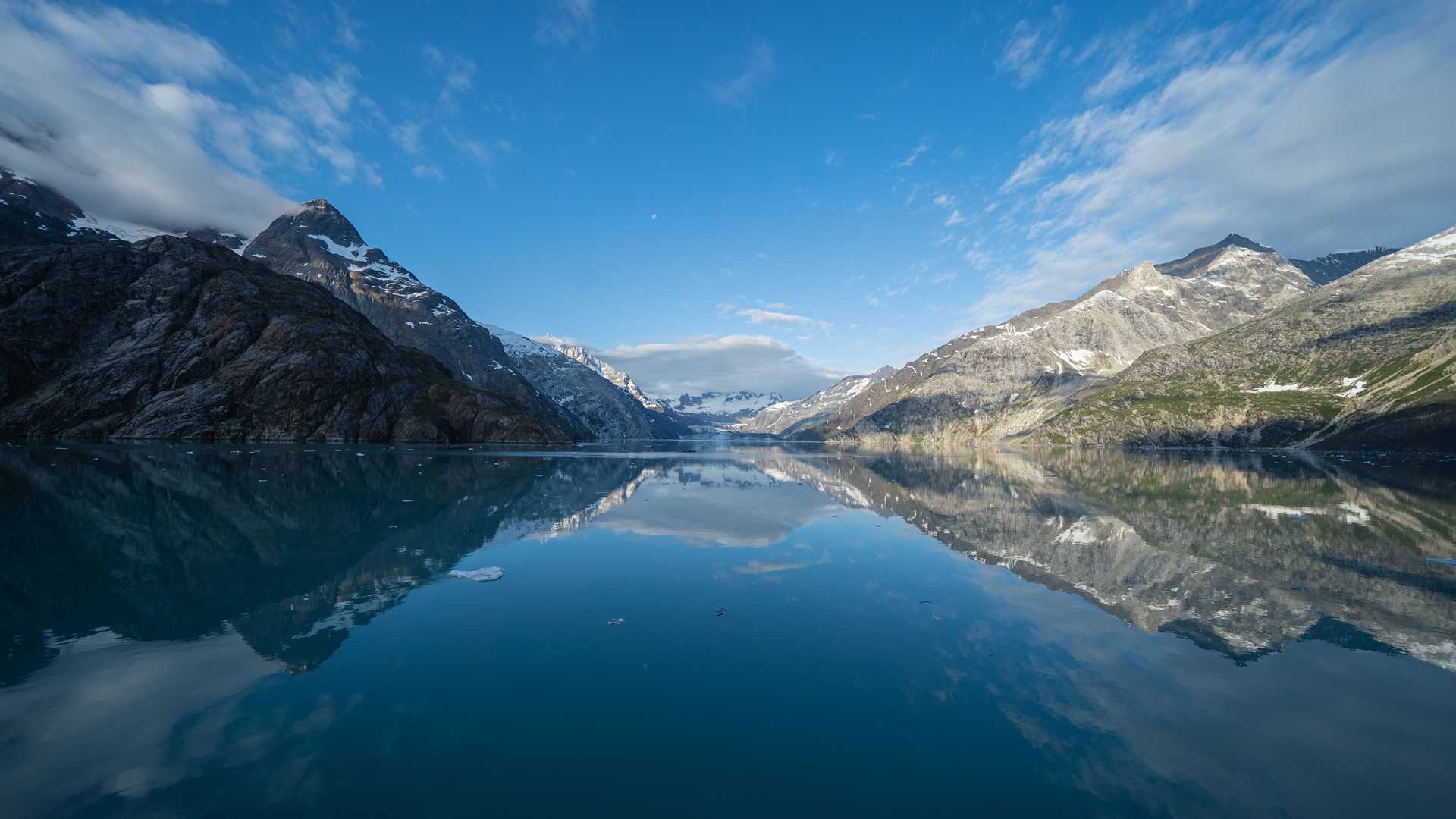The Johns Hopkins Glacier came into view as we rounded Jaw Point early this morning. We had sailed all night though the southern end of Glacier Bay and woke up to one of the most spectacular sights in North America. One of several tidewater glaciers that exist in the park, the Johns Hopkins is perhaps the most picturesque with its extraordinary backdrop of towering peaks and its nearly three hundred feet of vertical blue ice. This glacier has remained relatively stable given its close proximity to the abundant snow of the Fairweather Range. An added benefit to our visit here was the chance to see the Tar Inlet suture zone, a geologic boundary between two exotic terranes that collided with North America in the distant past. Glacial scour has laid open the landscape to reveal a complex mélange of rock formations.
While geology seemed to be the star of the show today, the weather and the wildlife delivered as well. The weather was perfect—calm, warm, and sunny with distant clouds to add character to an already spectacular mountain backdrop. We saw coastal brown bears, mountain goats, humpback whales, and Stellar sea lions among the megafauna. Countless birds flew near the ship and rested in the water or along the shoreline. Avian standouts included both the tufted and horned puffin, Kittlitz murrelets, common murres, scoters, and numerous black-legged kittiwakes.
Geologist and naturalist Jeff Grover spoke on glaciers and the effects of the Ice Age on Alaska and, in the afternoon, Alex Harper gave a talk on the common and not-so-common birds in the region. In the evening, after dinner, we docked at Bartlett Cove to stretch our legs on the nearby forest trail.







